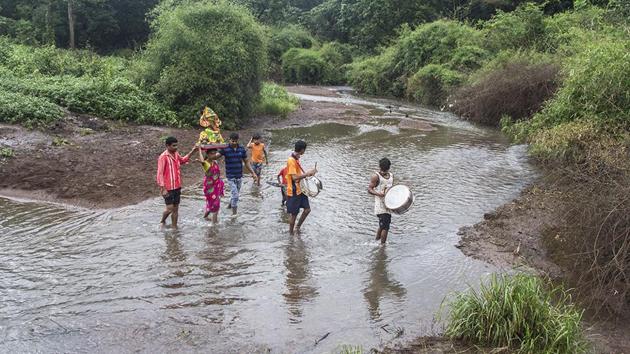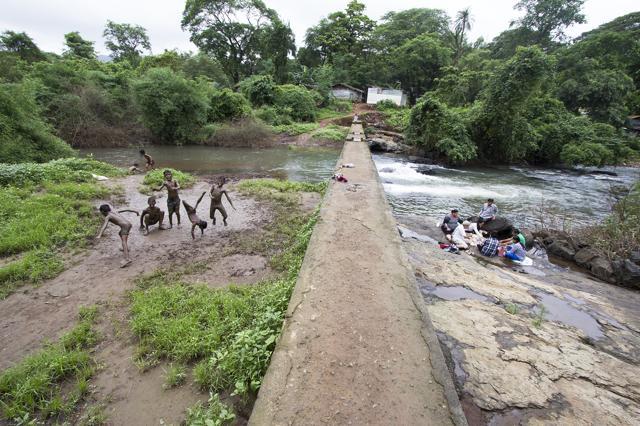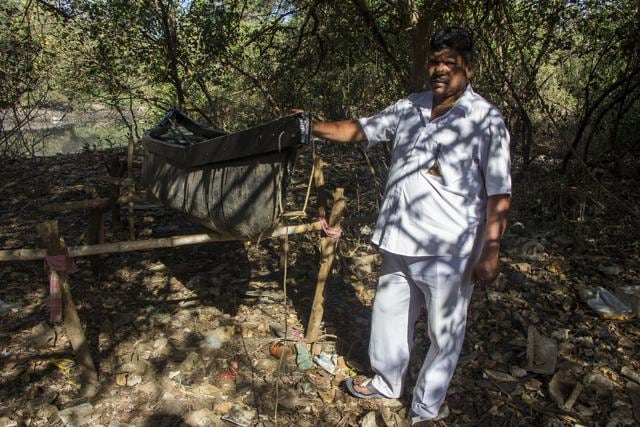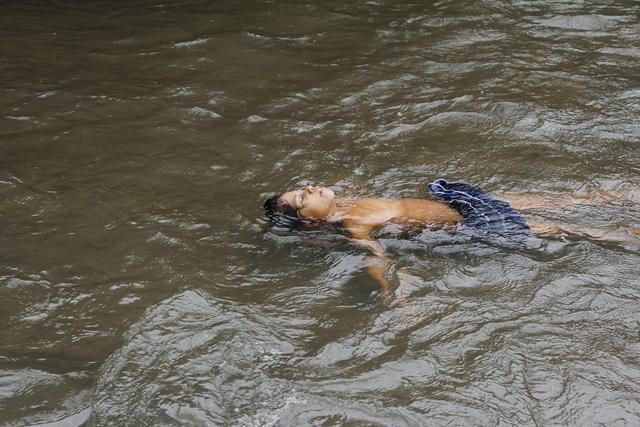A photo project highlights how Mumbai’s four rivers faded from public memory
Did you know that Mumbai has four rivers? A photo project highlights the plight of communities living along the banks of Mumbai’s rivers
A dam runs through the centre, dividing the photograph in equal halves. The dam – not one comprising floodgates and electricity-generating turbines – is built on a stream of water. On the left is a group of children covered in mud, jumping about with wide grins on their faces. On the right, a few adults are enjoying a picnic.

At first glance, the stream looks like a nullah. The water is muddy, and the banks are full of garbage. It’s not a picnic-friendly spot. “It’s actually the Dahisar River – one of the four rivers in Mumbai, others being Poisar, Mithi and Oshiwara rivers,” says photographer Aslam Saiyad (39), who clicked the photo. It’s not your usual river – wide, calm, with a few feet of froth floating on its surface (read, the Ganga). Dahisar River originates inside Sanjay Gandhi National Park (SGNP), Borivali, at the spillway of the Tulsi Lake, and flows into the Arabian Sea via the Manori Creek.
“And yet, most Mumbaikars don’t know that such a river exists,” says Saiyad. So, in May 2016, Saiyad decided to launch a photo campaign – The Forgotten Rivers of Bombay – to shed light on the condition of four rivers, and how they have waned from common knowledge. The Dahisar River is the first leg of his project.
Read more: A science fiction short film suggests that Mumbai might be an alien base

Just a few weeks into the project, however, Saiyad’s original aim turned on its head. He was working on a project for River March, a citizen brigade’s initiative to clean up the rivers of Mumbai, and was inside SGNP. He noticed a group of children walking along Dahisar River, dressed in school uniforms.
“They were walking to school 7km away. It was deeply saddening that this was the plight of the underprivileged, who live in the heart of a cosmopolitan city. So, while the government is busy implementing conservation programmes for the river, the adivasis have been sidelined, and are left to fight for their basic survival – food, shelter, employment. That’s what makes their stories powerful,” says Saiyad.
He spent the whole of last year documenting the lives of the adivasi communities that reside along the riverbanks – the Warlis and Agri fishermen. The photos, released on March 19, 2017, as part of a public exhibition along the Dahisar River, showcase powerful human interest stories with glimpses of the forgotten river.
Read more: An American artist shows the darker side to the Disneyland fantasy

Saiyad uses the river as a backdrop for each story. For instance- a picture showcases the story of a fisherman named Hemant Bhoir. Bhoir is standing next to his makeshift canoe, on the banks of Dahisar River. “Bhoir’s family has been fishing for generations, and yet, now he says there’s almost no fish in their regular area. He has docked his boat and runs a rickshaw for a living,” writes Saiyad, next to the picture, uploaded on his Facebook page, Bombay ka Shana.
However, not all the stories and images are bleak. Some focus on the joy the rivers bring. From the picture with children playing in mud, to one where a young girl is seen floating in the river, all emphasise on the symbiotic relationship between nature and human civilisation. “The river is like their personalised, free swimming pool. It is as normal to them as traffic is to an average Mumbaikar. It’s fascinating how closely they are attached to nature in a city that’s moving far away from everything natural,” says Saiyad.






